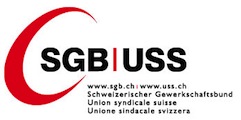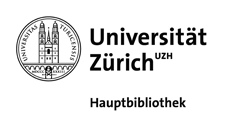Publications des institutions partenaires
Comment on "risk preferences are not time preferences": balancing on a budget line
In a recent experimental study of intertemporal risky decision making, Andreoni and Sprenger (2012) find that subjects exhibit a preference for intertemporal diversification, which is inconsistent with discounted expected utility theory. It was claimed that their results are also at odds with models involving probability weighting, such as rank-dependent utility and cumulative...
Institution partenaire
English / 01/07/2015
Rethinking fast and slow based on a critique of reaction-time reverse inference
Do people intuitively favour certain actions over others? In some dual-process research, reaction-time (RT) data have been used to infer that certain choices are intuitive. However, the use of behavioural or biological measures to infer mental function, popularly known as ‘reverse inference’, is problematic because it does not take into account other sources of variability in the...
Institution partenaire
English / 01/07/2015
Cortisol and testosterone increase financial risk taking and may destabilize markets
It is widely known that financial markets can become dangerously unstable, yet it is unclear why. Recent research has highlighted the possibility that endogenous hormones, in particular testosterone and cortisol, may critically influence traders’ financial decision making. Here we show that cortisol, a hormone that modulates the response to physical or psychological stress, predicts...
Institution partenaire
English / 01/07/2015
Transcranial direct current stimulation of the posterior parietal cortex modulates arithmetic learning
The successful acquisition of arithmetic skills is an essential step in the development of mathematical competencies and has been associated with neural activity in the left posterior parietal cortex (PPC). It is unclear, however, whether this brain region plays a causal role in arithmetic skill acquisition and whether arithmetic learning can be modulated by means of non-invasive...
Institution partenaire
English / 01/07/2015
Innovation and Top Income Inequality
In this paper we use cross-state panel data to show that top income inequality is (at least partly) driven by innovation. We first establish a positive and significant correlation between various measures of innovativeness and top income inequality in cross-state panel regressions. Two distinct instrumentation strategies suggest that this correlation (partly) reflects a causality...
Institution partenaire
English / 01/07/2015
Essays on Immigration, Human Capital and Technical Change
Institution partenaire
English / 01/07/2015
Essays on motivation and incentives: theory and experimental evidence
Institution partenaire
English / 01/07/2015
Neuroeconomic approaches to emotion-related influences on decision-making
Decades of classic economic research have neglected the role of incidental and integral emotional factors in human decision-making. Standard economic models assume that decision-making is consequentialist in nature: Decision-making is postulated to be guided by the decision maker’s rational assessment of desirability and likelihood of alternative outcomes, i.e., by his strive to...
Institution partenaire
English / 01/07/2015
Diversification, protection of liability holders and regulatory arbitrage
Any solvency regime for financial institutions should be aligned with the two fundamental objectives of regulation: protecting liability holders and securing the stability of the financial system. From these objectives wederive two normative requirements for capital adequacy tests, called surplus and numeraire invariance, respectively. We characterize capital adequacy tests that...
Institution partenaire
English / 29/06/2015
The Effectiveness of Public R&D Subsidies and the Role of Collaboration
This study investigates the efficacy of public R&D support. Compared to most existing studies, we do not stop at substitution effects or general innovation outcome measures, but we are interested in knowing where the policy effect is highest: on innovation close to the market (i.e. incremental innovation) or on innovation that is still far from the market and hence more risky and...
Institution partenaire
English / 20/06/2015
The Effectiveness of Public R&D Subsidies and the Role of Collaboration
This study investigates the efficacy of public R&D support. Compared to most existing studies, we do not stop at substitution effects or general innovation outcome measures, but we are interested in knowing where the policy effect is highest: on innovation close to the market (i.e. incremental innovation) or on innovation that is still far from the market and hence more risky and...
Institution partenaire
English / 20/06/2015
Making sense of decoupling through narration : the case of fighting corruption in global business
Previous organizational research on decoupling in the context of socio-environmental governance has suggested a trade-off between compliance and goal achievement, meaning that remedying the decoupling of policies and practices tends to jeopardize efforts to remedy the decoupling of means and ends. We expand on previous research on the trade-off between compliance and goal achievement...
Institution partenaire
English / 15/06/2015
Entrepreneurial rights as human rights : Why economic rights must include the human right to science and the freedom to grow through innovation
The contemporary human rights debate is mostly concerned with the protection of people affected by change that is beyond their control. But what about those who make use of their basic economic rights to facilitate economic and social change? Do these agents of change need protection and, if so, how do their activities relate to the current debate on human rights?
In this book...
Institution partenaire
English / 01/06/2015
Agency problems, recapitalization costs and optimal resolution of financial distress
We introduce in a dynamic–contracting framework with moral hazard the possibility of recapitalization as an alternative to liquidation when a firm is in financial distress. This is achieved by considering a loss–averse agent and by allowing (but not requiring) the latter to inject additional capital into the firm when necessary. We show that firm recapitalization may arise in an...
Institution partenaire
English / 01/06/2015
Book review: Implicit Functions and Solution Mappings:A View from Variational Analysis. Second Edition. By A. L. Dontchev and R. T. Rockafellar. Springer, New York, 2014
Institution partenaire
English / 01/06/2015
Book review: Implicit Functions and Solution Mappings:A View from Variational Analysis. Second Edition. By A. L. Dontchev and R. T. Rockafellar. Springer, New York, 2014
Institution partenaire
English / 01/06/2015
Contest success functions: the common-pool perspective
The axiomatic route to the foundation of contest success functions (CSF) has proved to be both useful and prolific. The standard approach in the literature is based on the decision-theoretic notion that choice probabilities should be independent of irrelevant alternatives (Skaperdas, Economic Theory 1996). The present paper develops an alternative approach that suggests itself once...
Institution partenaire
English / 01/06/2015
The ambiguity triangle: uncovering fundamental patterns of behavior under uncertainty
The probability triangle (also called the Marschak-Machina triangle) allows for compact and intuitive depictions of risk preferences. Here, we develop an analogous tool for choice under uncertainty - the ambiguity triangle - and show that indifference curves in this triangle capture preferences for unknown probabilities. In particular, the ambiguity triangle allows us to examine...
Institution partenaire
English / 01/06/2015
Nazi indoctrination and anti-Semitic beliefs in Germany
Attempts at modifying public opinions, attitudes, and beliefs range from advertising and schooling to "brainwashing." Their effectiveness is highly controversial. In this paper, we use survey data on anti-Semitic beliefs and attitudes in a representative sample of Germans surveyed in 1996 and 2006 to show that Nazi indoctrination--with its singular focus on fostering racial...
Institution partenaire
English / 01/06/2015
The economics of effective leadership
Economists have typically assumed that the only way for leaders to get people to do things is to use carrots (e.g., pay raises) or sticks (e.g., threats of firing) to incentivize a desired behavior. One of the important contributions of recent research on leadership is to test the extent to which this really is true. Can leaders also motivate and inspire workers by their statements...
Institution partenaire
English / 01/06/2015
Pages
Le portail de l'information économique suisse
© 2016 Infonet Economy












